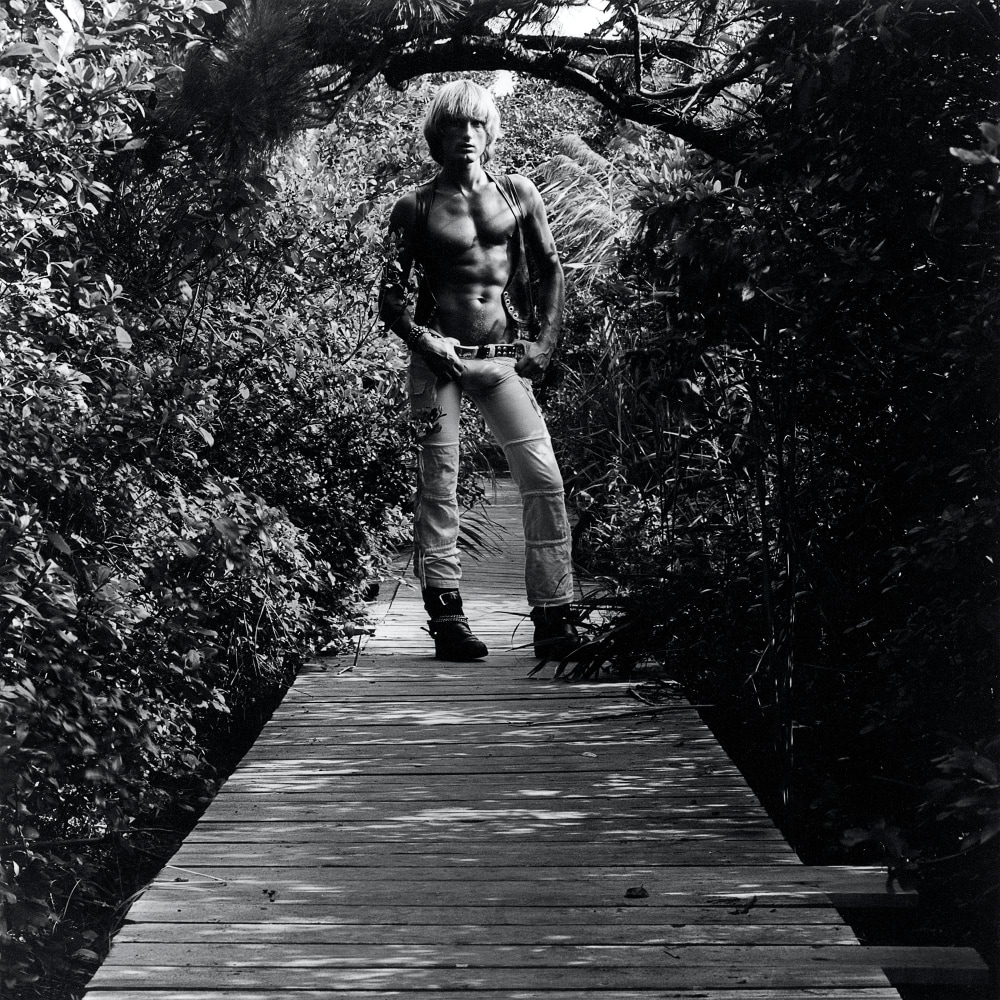
Peter Berlin, 1977
Exhibition Review: Robert Mapplethorpe Curated by Arthur Jafa at Gladstone
Featuring works from across his oeuvre, the new Robert Mapplethorpe retrospective at the Gladstone Gallery is a celebration of the iconic photographer’s storied career. Curated by artist Arthur Jafa, this exhibition invites observers to examine the famed artist’s work, now so entrenched in the canon of 20th-century photography, from a new perspective.
Rather than focus exclusively on the unfiltered depictions of gay sexuality Mapplethorpe is notorious for, Jafa has selected a collection of images that span the artist’s entire career — from instantly recognizable studio stills and silver gelatin prints to rarely seen Polaroids from the photographer’s archives. In doing so, Jafa is able to reshape the narrative that is now embedded in Mapplethorpe’s legacy and weaves new meaning and intention into his oeuvre as a whole.
The timeless issue of the artist-subject relationship was of particular importance to Jafa during his curatorial process, as it likely was to Mapplethorpe’s practice throughout his career. While sexuality featured heavily in his documentation of the gay male BDSM subculture of New York City in the 1970s, the works featured here, including those of lover and mentor Sam Wagstaff, reflect a quieter connection to intimacy than the camera lens often provides. This dance between ‘public’ and ‘private’ would become a signature of Mapplethorpe’s work, imbuing each piece with his telltale intensity. And while homo-eroticism and sensual pleasure feature heavily in his practice, as close friend and roommate Patti Smith once remarked, “Robert took areas of dark human consent and made them into art. He worked without apology, investing the homosexual with grandeur, masculinity, and enviable nobility...As Cocteau said of a Genet poem, ‘His obscenity is never obscene.’” While much of Mapplethorpe’s work was produced in his studio, this exhibition presents several of his pieces from the outside world, giving us further insight into the artist’s fascination with pattern, shadow, and composition. In “Apartment Windows, 1979”, Mapplethorpe captures a seemingly unremarkable building facade, framed with intentional symmetry, save for the blunt angle of the shadow cast across it by a neighboring structure. Conversely, in “Mountain, 1983”, he captures a solitary offshore islet, untouched by man and serene in its organic asymmetry, rough edges, and steep cliff faces. These natural landscapes are juxtaposed with photographs capturing the landscape of the human form, close-cropped body parts simultaneously exposed and protected in their faceless anonymity. This method of cropping his images to focus on a singular component of an image, or deny the viewer access to the entire subject, are stylistic traits evident across Mapplethorpe’s body of work. In “Alistair Butler, 1980”, we are merely offered the dancer’s profile at the bottom of the frame, with his eyes closed and his head thrown back in reverie, his physique cropped out of view.
While the exhibition features works exclusively by Mapplethorpe, Jafa’s meticulous curation of the collection is nearly as vital to the show’s impact as the images themselves. In his choreographing of the show, Jafa is able to create a new vernacular structure to Mapplethorpe’s oeuvre, constructing an unspoken dialogue between the two artists.